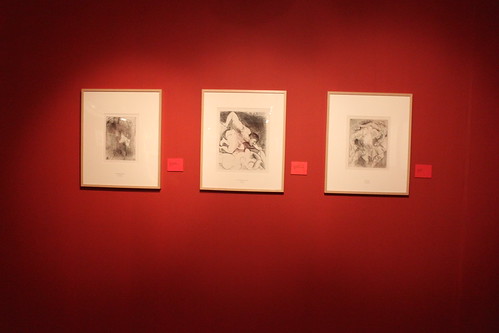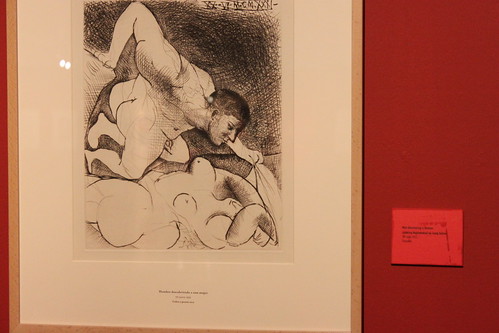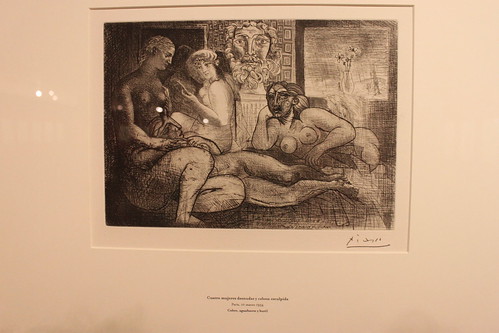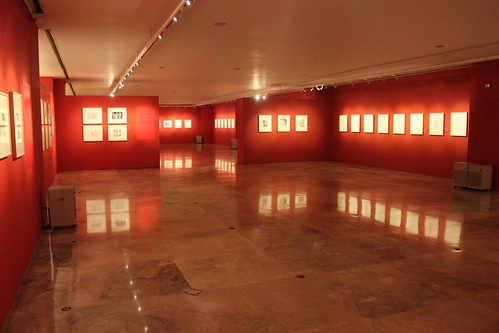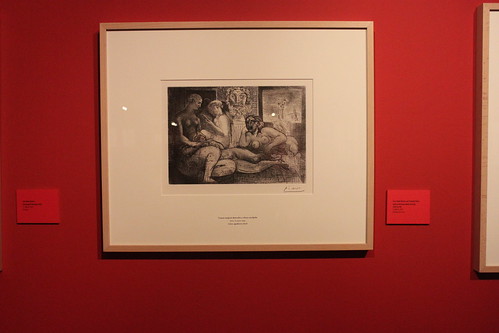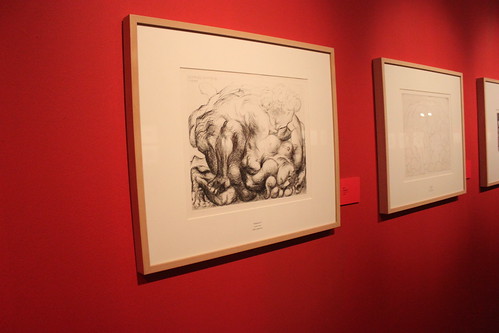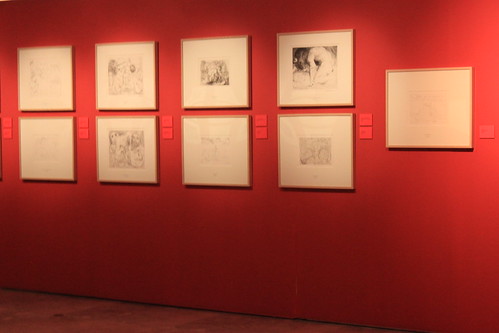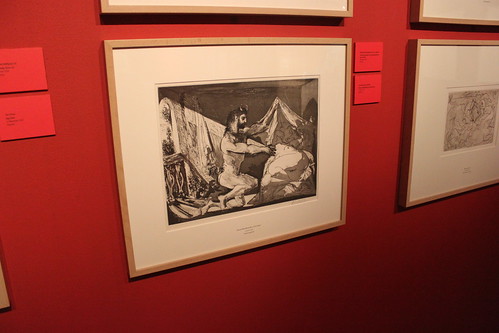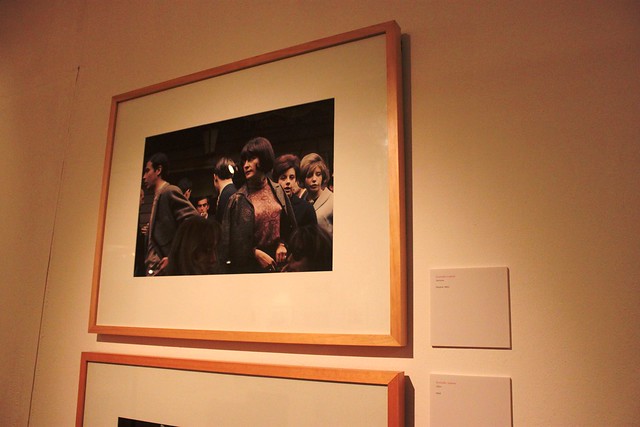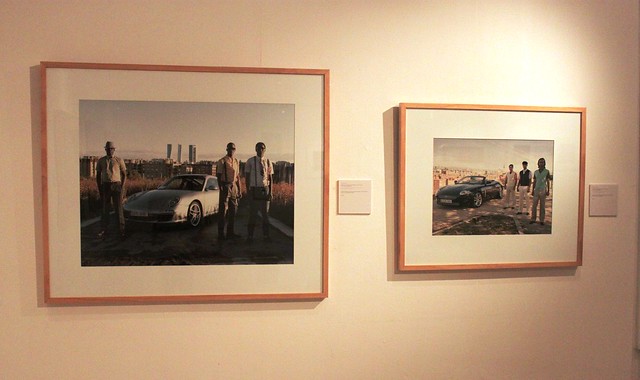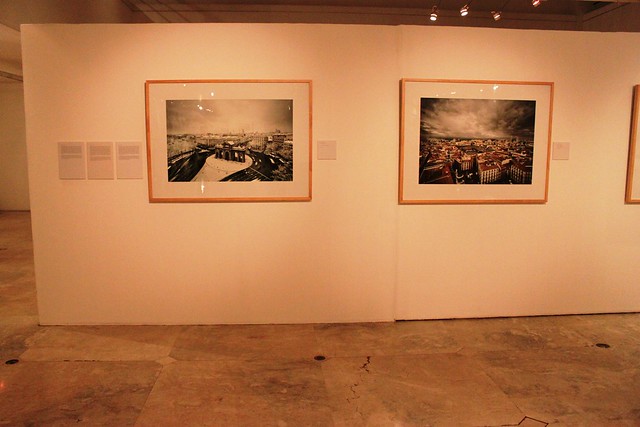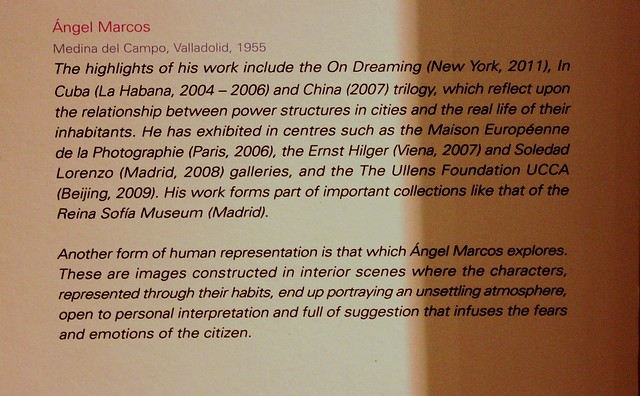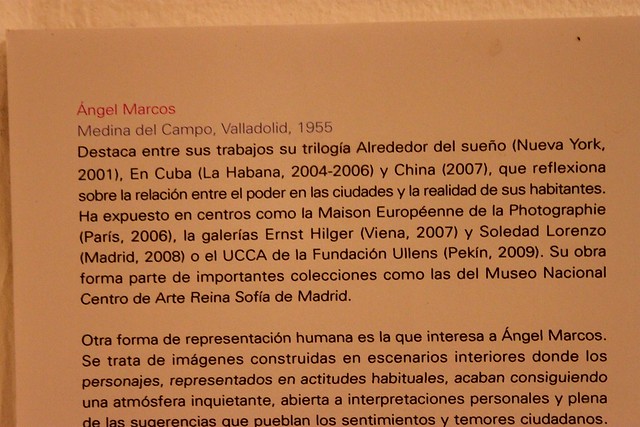I feel a little awkward discussing art when I just really like looking at it and don't really bother with techniques, or any other complexities of the seemingly impenetrable art world (scene?). Indulge me, anyway, because I only talk about those I really like. Two months ago, the good people of Fundacion Mafre and its Instituto de Cultura very kindly lent several Picasso pieces, created between 1930 to 1937, on loan to the Metropolitan Museum as part of an exhibit called Suite Vollard. The Suite Vollard, named after art dealer and curator Ambroise Vollard, is a collection of etchings by Spanish artist Pablo Picasso using different techniques. I'm pretty sure the francophile in you would find it interesting that these etchings were made in Paris, while Picasso was on a self-exile, back when he vehemently refused to show any of his works in his motherland, Spain, because a certain Francisco Franco was in power. (I do like that name, Francisco, if I may say so myself. Franco, too.)
I love Picasso so I might be a bit biased here. I find his works all at once, prolific, passionate and playful. I like that what would seem like mere doodles in his mind were transformed into impeccable executions of mythical creatures. The collection that was recently in Manila showcased the mythic quality to most of Old Man Pablo's drawings. Some of my favorites are the drawings that seemed to set the mood for future paintings such as the Sculpture Viewed from Behind and the Bearded Head. Someone also noted that they look like "A study of..." drawings, which in hindsight, makes perfect sense. I also noticed that most of Picasso's drawings (or doodles, if you may) had Rembrandt's profile or head in them, as in Rembrandt and Female Heads. This must be a manifestation of Picasso drawing inspiration from the works of Rembrandt himself. My favorites, however, were those drawings that looked like they were meant for a mythical novel, drawings that largely reminded me of Oedipus, Europa and Theseus. I also liked the heavily-sketched Minotaur series. The handiwork itself is impressive but not as impressive as the picture that the Maestro was able to draw. It's interesting to note that Minotaurs, in classic surrealist fashion, are inhuman, irrational and mythic. Picasso was fond of drawing the Minotaur because he acknowledged that there is something distinctly human about being a monster. I like how he chose the Minotaur to depict human savagery and the animal instinct humans possess.
My favorite collection in the exhibit would be the "Battle of Love", where the plates transition from subtle erotic drawings to depictions of full-blown sexual violence. Who wouldn't love that excellent combination of love, overpowering force, human energy, and woman's sexuality? Sex and violence may come out vulgar and lewd (or even tacky) if not executed well but these drawings are really beautiful, skillful and dare I say it, passionate. I guess that's the true stroke of a genius. Pablo Picasso is, in all counts, a master.
PS: I tell everyone that my favorite Picasso piece is La Douleur. Because I am obnoxious. Anyway, here are some of my favorite pieces from the recently concluded exhibit:

